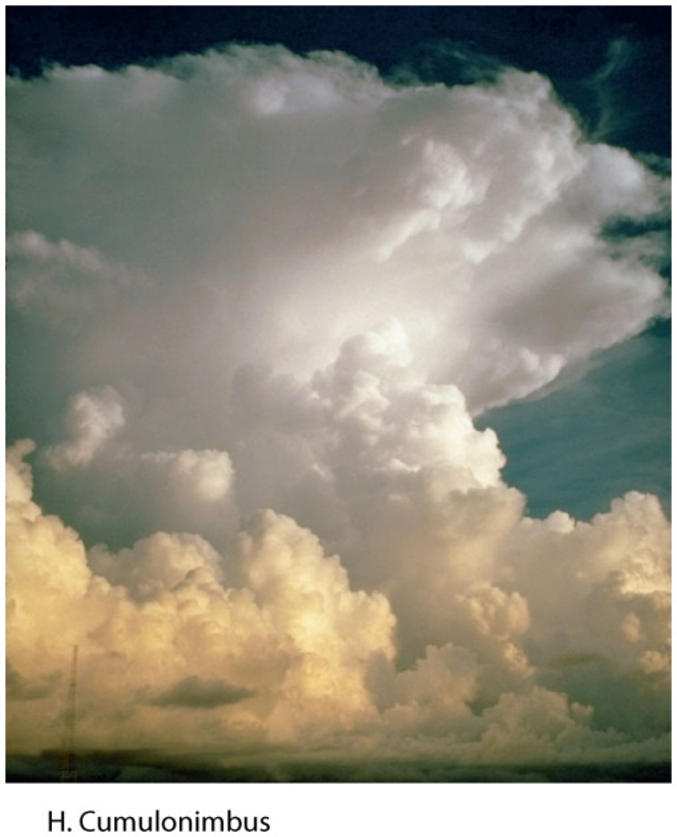 |
| Previous Image | Next Image |
| Description: Determines to a large degree Type of clouds that develop Intensity of the precipitation Condensation Water vapor in the air changes to a liquid and forms dew, fog, or clouds Water vapor requires a surface to condense on Possible condensation surfaces on the ground can be the grass, a car window, etc. Possible condensation surfaces in the atmosphere are called condensation nuclei Dust, smoke, etc Ocean salt crystals which serve as hygroscopic (“water-seeking”) nuclei Clouds Made of millions and millions of Minute water droplets, or Tiny crystals of ice Classification based on Form (three basic forms) Cirrus – high, white, thin Cumulus – globular cloud masses often associated with fair weather Stratus – sheets or layers that cover much of the sky Classification based on Height High clouds – above 6000 meters Types include cirrus, cirrostratus, cirrocumulus Middle clouds – 2000 to 6000 meters Types include altostratus and altocumulus Low clouds – below 2000 meters Types include stratus, stratocumulus, and nimbostratus (nimbus means “rainy”) Classification based on Height Clouds of vertical development From low to high altitudes Called cumulonimbus Often produce rain showers and thunderstorms Picture Stats: Views: 333 Filesize: 1.07MB Height: 837 Width: 677 Source: https://biology-forums.com/index.php?action=gallery;sa=view;id=39796 |
